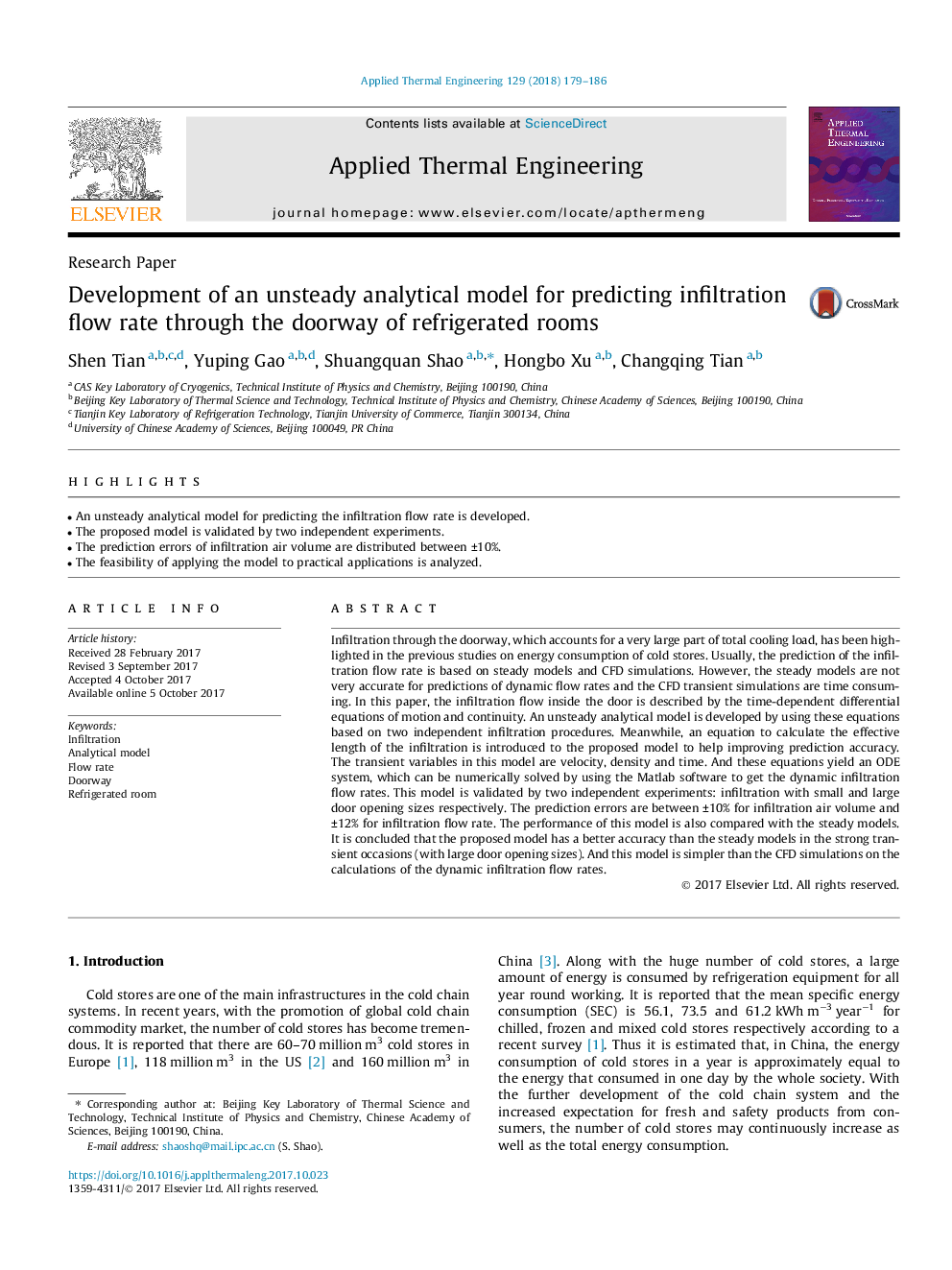ترجمه فارسی عنوان مقاله
توسعه یک مدل تحلیلی ناپایدار برای پیش بینی سرعت جریان نفوذ از طریق درهای اتاق های سرد
عنوان انگلیسی
Development of an unsteady analytical model for predicting infiltration flow rate through the doorway of refrigerated rooms
| کد مقاله | سال انتشار | تعداد صفحات مقاله انگلیسی |
|---|---|---|
| 151831 | 2018 | 8 صفحه PDF |
منبع

Publisher : Elsevier - Science Direct (الزویر - ساینس دایرکت)
Journal : Applied Thermal Engineering, Volume 129, 25 January 2018, Pages 179-186
ترجمه کلمات کلیدی
نفوذ، مدل تحلیلی، نرخ جریان، دروازه اتاق یخچال،
کلمات کلیدی انگلیسی
Infiltration; Analytical model; Flow rate; Doorway; Refrigerated room;

